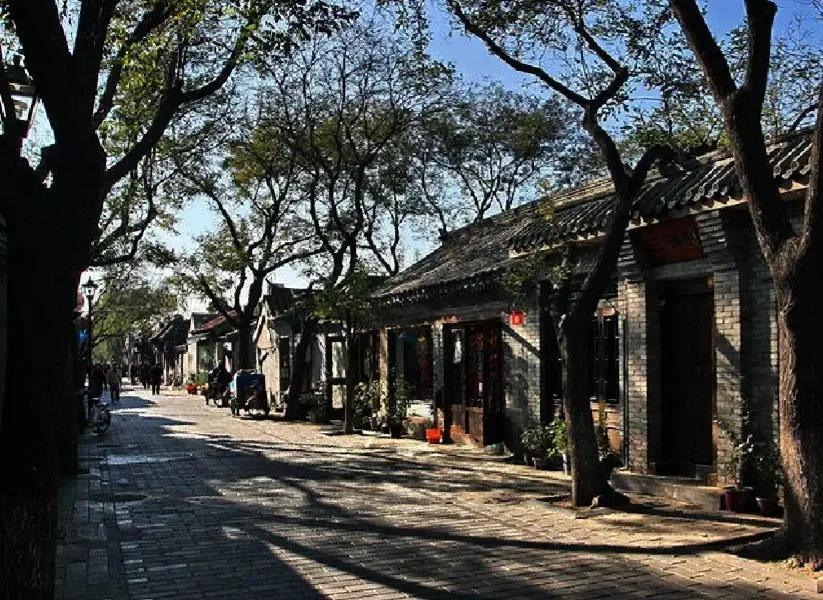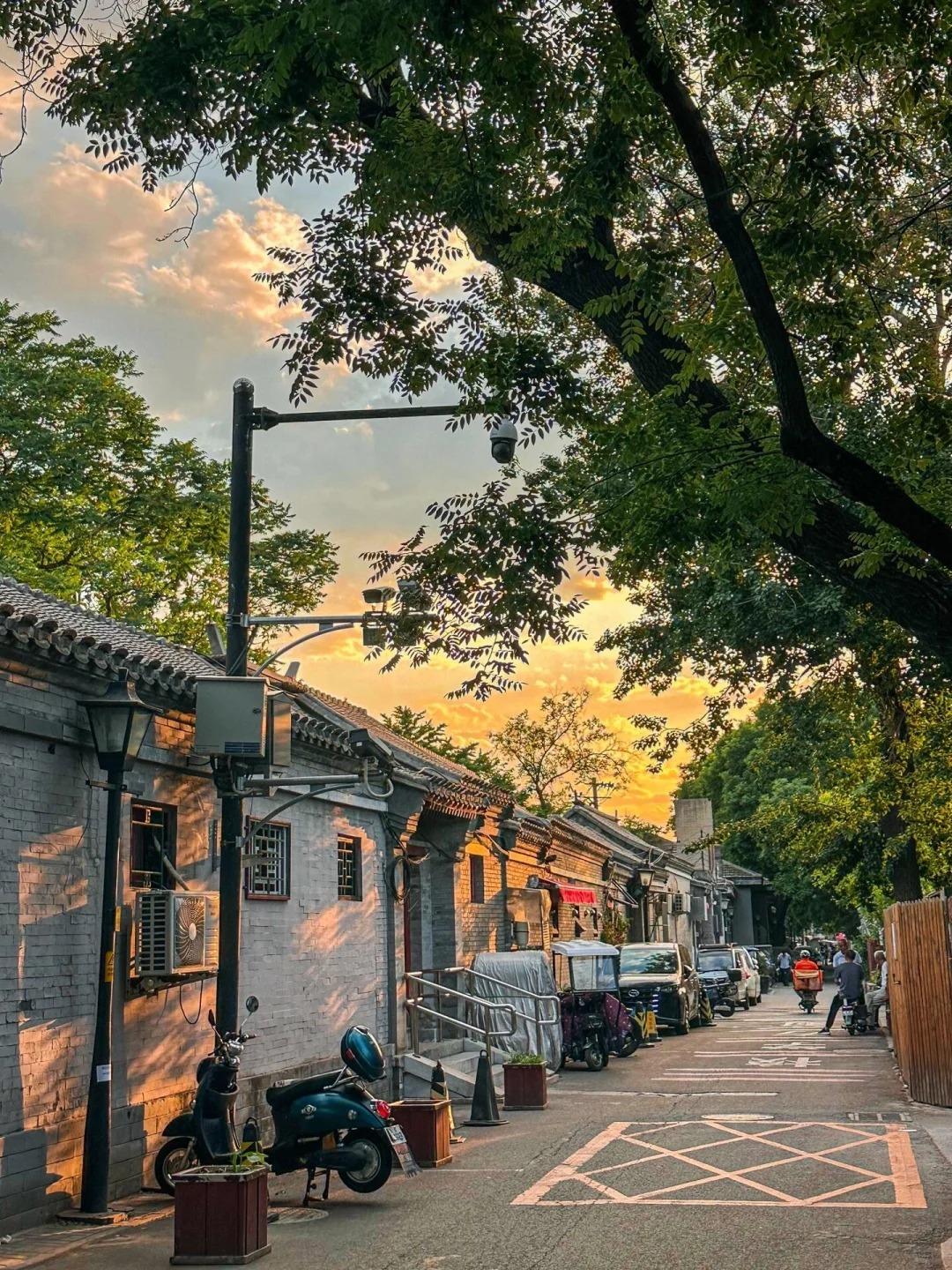Visiting Information
| Information | Details |
|---|---|
| Chinese Name | 胡同 (Hútòng) |
| Location and Address | Various locations in Beijing, primarily in the old city areas |
| Opening Hours | 24 hours (as they are public streets) |
| Entrance Fee | Free |
| How to Get There | By Metro: Various stations near hutong areas, e.g., Nanluoguxiang (Line 6, 8) By Bus: Multiple routes available depending on specific hutong By Taxi: Ask for specific hutong name or nearby landmark |
| Best Time for Visit | Spring (April-May) and Autumn (September-October) for comfortable weather |
| Contact Info | N/A (Public streets) |
Overview
Hutongs are narrow alleys or streets commonly found in Beijing, China. These historic lanes, formed by lines of traditional courtyard residences, are an integral part of old Beijing’s urban fabric. They offer a glimpse into the traditional way of life in the capital city and are known for their charm, cultural significance, and architectural uniqueness.
Historical Background
Hutongs date back to the Yuan Dynasty (1271-1368) when Beijing became the capital of China. They evolved over centuries, reaching their peak during the Ming and Qing Dynasties. Originally, hutongs were planned and laid out according to strict hierarchical systems, with those closer to the Forbidden City housing higher-ranking officials and aristocrats. Over time, they became home to people from all walks of life, creating vibrant communities within the city.

Architectural Features
- Siheyuan: The basic architectural unit of a hutong is the siheyuan, or courtyard house. These are quadrangle compounds with rooms on all four sides surrounding a central courtyard. The layout reflects traditional Chinese concepts of balance and harmony.
- Narrow Alleyways: Hutongs are characterized by their narrow alleyways, typically 3-10 meters wide. These lanes connect the siheyuan and create an intricate network of passages throughout old Beijing.
- Gray Brick Walls: Many hutongs feature high gray brick walls that line the alleyways. These walls provide privacy for the residents and contribute to the distinctive aesthetics of the hutong landscape.
- Ornate Gates: The entrances to siheyuan often feature beautifully carved wooden gates, sometimes adorned with stone lions or other decorative elements, indicating the status of the original inhabitants.
Cultural Importance
Hutongs are more than just architectural relics; they embody the essence of Beijing’s cultural heritage. They represent a way of life that has persisted for centuries, fostering close-knit communities and preserving traditions. The hutong lifestyle, characterized by its communal nature and strong neighborhood ties, offers a stark contrast to modern urban living. These areas are also repositories of traditional crafts, cuisines, and customs, making them vital to Beijing’s cultural identity.
Surrounding Attractions
- Nanluoguxiang: One of the most famous hutong areas, Nanluoguxiang is an 800-meter long alley lined with shops, cafes, and bars. It offers a blend of traditional architecture and modern amenities, making it popular among tourists and locals alike.
- Shichahai Area: This scenic area includes three lakes (Qianhai, Houhai, and Xihai) surrounded by historic hutongs. It’s known for its picturesque views, especially at night when the lakeside bars and restaurants come alive.
- Drum and Bell Towers: Located near the hutong areas, these ancient towers once served as the time-telling center of the capital. They offer panoramic views of the surrounding hutong neighborhoods.
- Yandai Xiejie: One of the oldest hutongs in Beijing, Yandai Xiejie is known for its traditional Chinese architecture and quaint shops selling antiques, tea, and local crafts.

Photography Opportunities
- Architectural Details: The intricate details of siheyuan gates, gray brick walls, and traditional roof tiles offer excellent close-up photography opportunities. These elements capture the essence of hutong architecture.
- Street Life Scenes: Hutongs are vibrant with local life. Capturing residents going about their daily routines, playing chess in the alleys, or vendors selling traditional snacks can result in compelling street photography.
- Contrast of Old and New: Many hutong areas juxtapose ancient architecture with modern elements, providing interesting compositions that highlight Beijing’s blend of tradition and modernity.
- Seasonal Beauty: Hutongs take on different characters with the changing seasons. From snow-covered roofs in winter to tree-lined alleys in spring, each season offers unique photographic opportunities.
Modern Importance
- Cultural Preservation: Hutongs serve as living museums, preserving traditional Beijing culture and architecture. Their continued existence is crucial for maintaining the city’s historical identity amidst rapid modernization.
- Tourism: Hutongs have become major tourist attractions, offering visitors an authentic glimpse into traditional Beijing life. This has led to the development of hutong tours, including popular rickshaw rides through the narrow alleys.
- Urban Planning Challenges: The preservation of hutongs presents unique challenges in urban development. Balancing the need for modernization with the preservation of these historical areas is a key issue in Beijing’s urban planning.
- Community Life: Despite changes, many hutongs continue to foster strong community bonds. They provide a unique living environment that contrasts with modern high-rise apartments, offering a different quality of life in the heart of the city.

FAQ
- What is Hutong famous for?
Hutongs are famous for their narrow alleyways, traditional courtyard residences (siheyuan), and their representation of old Beijing’s culture and way of life. - What’s inside Hutong?
Inside hutongs, you’ll find traditional courtyard houses, local residents going about their daily lives, small shops, restaurants, and sometimes hidden temples or historical sites. - Is Hutong free?
Yes, hutongs are public streets and are free to visit. However, some specific attractions within hutong areas may charge an entrance fee. - Is Hutong worth visiting?
Absolutely. Hutongs offer a unique glimpse into traditional Beijing life and architecture, making them a must-visit for anyone interested in Chinese culture and history. - What to do in Hutong?
In hutongs, you can explore the narrow alleys, visit traditional courtyard houses, try local cuisine, shop for traditional crafts, take photos, and experience daily life in old Beijing. - How do I get to Hutong in the local city?
In Beijing, you can reach hutong areas by metro (e.g., Nanluoguxiang station on Line 6 and 8), bus, or taxi. Many hutongs are located in the city center, near popular attractions like the Forbidden City. - How to visit Hutong?
You can visit hutongs on foot, by bicycle, or on a rickshaw tour. It’s best to wear comfortable walking shoes, bring a map or smartphone for navigation, and be respectful of local residents as you explore.






